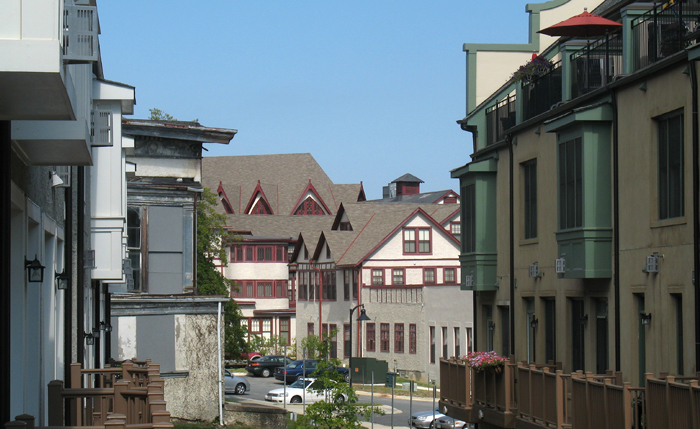Always nice to see new life in tradition, and the Carolina Chocolate Drops keep it fresh.
Tag: tradition
Details, Details: Gizmeaux
Just as an example, consider the way Carrère and Hastings used what was then the relatively modern gizmo of the light bulb in their 1902 rotunda at Yale. C&H’s calculated eclecticism certainly represents the practice that the Modern Movement considered its antagonist, but here, their flexibility paid off. Without going into theatrical crassness, they play light and molding off of each other in a way that adds intensity to the conventional architectural manipulation of space and articulation. Light, for the designers of this space, was becoming a material and not just an condition taken for granted.
Where is this expansive, flexible attitude now?
Mixing New and Old at the Eisenhower Memorial
Yesterday, a panel selected a design concept by Frank Gehry for the Dwight D. Eisenhower Memorial The design is promising.
The large blocks form a circle, enclosing a single tree and a small pool of water. On the faces of the ring of stones, images cast in low relief and quotations in large type speak history to those inside. East and west of the central courtyard, groves of trees canopy informal plazas. At first blush, these spaces feel intimate and beautiful. Rising from just beyond the trees, large stainless steel screens supported by limestone columns enclose the space on the north and south sides. The screens will contain some of the sculptural program through a woven scrim that hides the forgettable Department of Education Building to the south. The street condition is undefined, bounded by the scrims except at three prominent areas.
The axis of Maryland Avenue cuts through the memorial, with the stone ring in the center. Building the memorial without disrupting the viewshed of the Capitol or traffic flow were seen as the two big problems. The Memorial Commission selected a design by Gehry that sidesteps the issue of sightlines, by removing one of eight columns and two sections of the screens. This way, the design frames the primary view of the Capitol with the same structures that fit it into the grid. In terms of the vehicular route, the panel rejected a vehicular road through the monument and instead created a pedestrian plaza. The site was located to move the monumental program off of the Mall. Drawing visitors, most of whom tour on foot, was equally important.
Gehry has tamed his own style is tamed for this project, although the ring of stones exemplifies the blockish forms he had been experimenting with since the opening of Walt Disney Hall. Mercifully, Gehry has also eschewed the dismal expressionism of a younger generation of memorial designers. The design team did not try to assign tremendous meaning to every little detail. Instead, it is a building that can be judged for its power and for its beauty, although people will disagree.
Continue reading ➞ Mixing New and Old at the Eisenhower Memorial
Forest Glen Seminary: An Unintentional Project

But from the enormous source material of the existing buildings, the Alexander Company took what opportunities it had and exploited them into a quiet celebration of the specific context. The original buildings, despite their conversion to a warren of private apartments and condominiums, have kept of their idiosyncrasies. In spite of sparkling new halogen lights and granite countertops, the apartments retain the unique elements that make the buildings meaningful to residents.
Continue reading ➞ Forest Glen Seminary: An Unintentional Project

